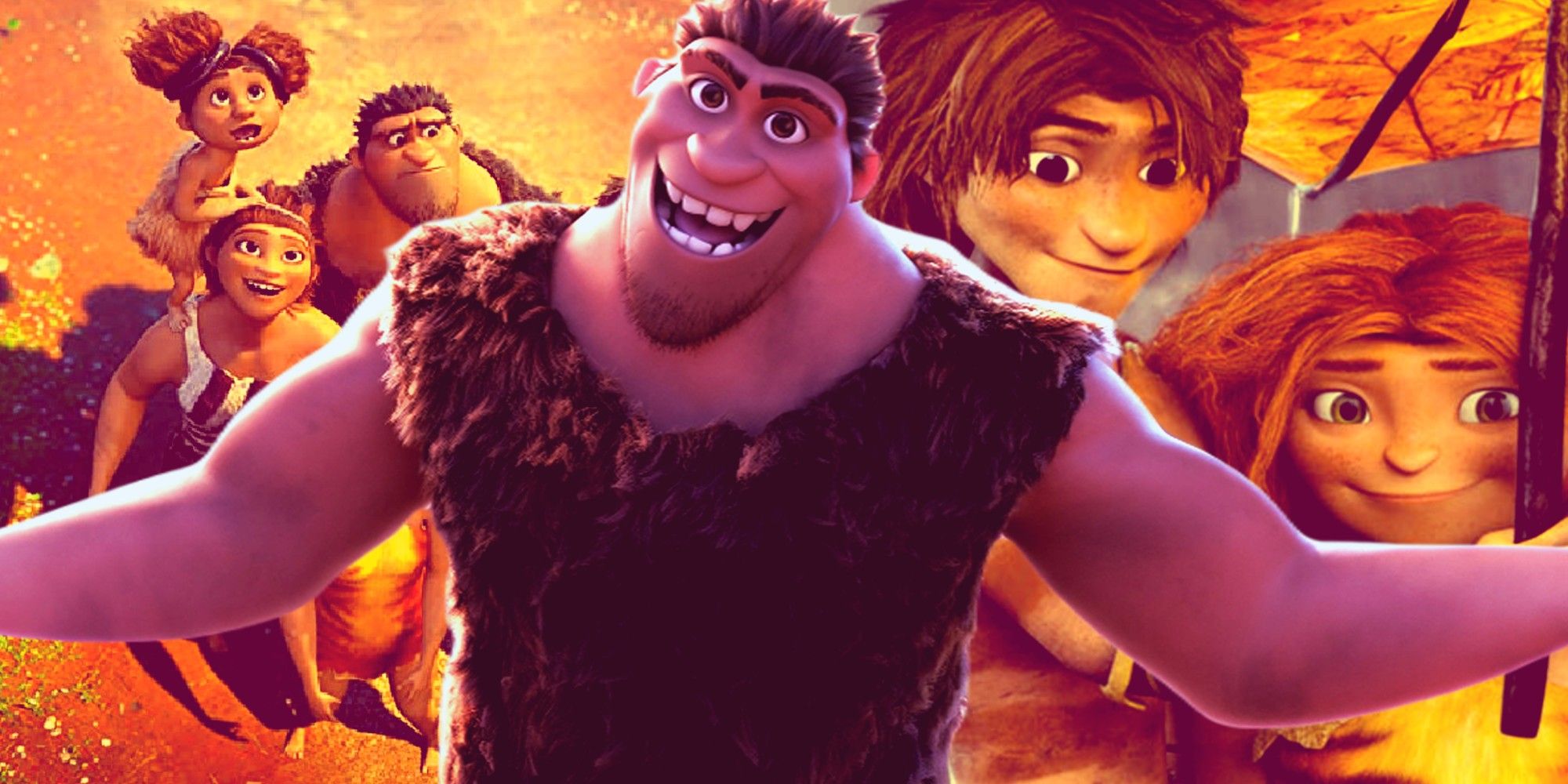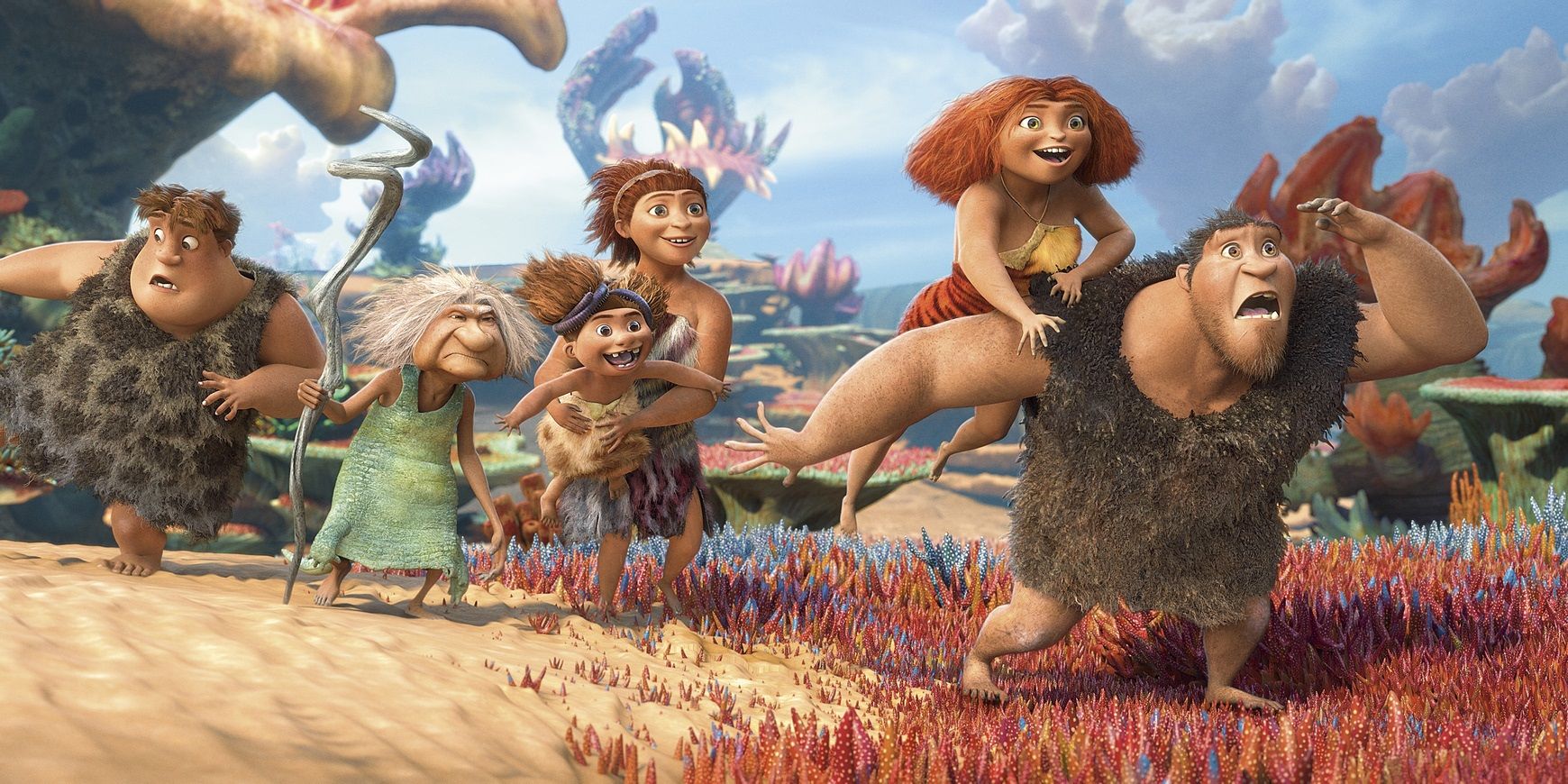Summary
- Neanderthal expert praises The Croods for its poetry, interesting drawings, and universal message despite its lack of accuracy.
- The movie portrays a Western family structure, which is not representative of the Paleolithic era or modern society.
- The animated feature highlights the societal resistance to novelty and change, which is still relevant today, making it an interesting watch despite its inaccuracy.
Neanderthal expert praises the early humans in The Croods despite not finding it perfectly accurate. Released in 2013, The Croods takes on the story of a family of cavemen who must trek through unfamiliar terrain when their cave is destroyed. The animated movie was nominated for Best Animated Feature at the Academy Awards and spawned a 2020 sequel The Croods: A New Age, the Netflix animated series Dawn of the Croods, and the Hulu series The Croods: Family Tree.
Albeit with some key caveats, paleoanthropologist Ludovic Slimak has positive words about The Croods. In a video with Penguin Books UK, Slimak breaks down multiple aspects of the movie, most notably claiming that one doesn’t “even need to go into the past” to capture the story of The Croods.
The paleolithic-set animated feature borrows its family issues from the traditional “Western home.” Slimak still lauded the “universal message,” scoring it a 7 out of 10 on that basis while still giving the accuracy a mere 2 out of 10. Check out the full breakdown from Slimak below:
“So it’s very nice because there’s a good poetry. They have poetry in the text. The drawings are pretty interesting also. But what we see, it’s a Western family. And so, this is mom and dad and the grandparents and the little children. And even today, it’s not working like that. It’s working like that in Europe and in some parts of America. But by the way, there’s a lot of solutions. You can share genes in many ways. You can be the father and the uncle and a woman can have maybe 10 males they love and have children with them. But there we have a little group, a little family, they go in their caves, it’s like it’s their home. It’s a Western home. So, we have a great projection.
Wow. We just saw a giant mosquito. It’s working like a plane. We must understand is that in this time period, the paleolithic, let’s say we are, I don’t know when we are, but let’s say we are 30,000 years ago. Well the animals are the animals we know today. But of course there are mammals but you know they’re in the family of Elephantidaes, or like elephants. So the fauna you will find in Europe for example would be the fauna you have actually in Africa with an adaptation to the northern latitude to the cold environments. But they should be something that we know around us.
Her world is our world very clearly. So, well you don’t even need to go in the past. Just go horizontally in other continents and things would be very different. And so for just children living with all the group and so that is only a part. And all the other can visit uncles and everybody’s in charge of the education. Not only daddy saying ‘This is forbidden.” And daddy can be good then by the way.
That’s interesting because I realize that during the paleolithic the families have the same problem then today. *Laughs* I don’t know, maybe this family is talking about my family and my children.
Prehistoric family, paleolithic family is against novelty as it represents some kind of danger. This society is in the last, like today we have to obey to certain rules, to a certain way to be socially. And when we change this way, we don’t like that. There’s no society that really like the difference. And they have rules and based on these rules, the society itself can reproduce itself and can continue to live. It’s very interesting. There’s something true.
In terms of accuracy, I would give a 2. But in terms of if we don’t just look at the accuracy, but there’s a kind of message that’s a kind of universal message, or the relation between traditional society and novelty, then it’s pretty good. I would say give it a 7.”
The Croods Makes No Effort Towards Accuracy (But Is That A Problem?)
Given all its factual shortcomings, Slimak is fairly generous in his assessment of The Croods. While not scoring the highest of the films analyzed in the video (that honor went to Kubrick’s masterpiece 2001: A Space Odyssey), Slimak had plenty of positive endorsements of the movie, calling it “very interesting” with “something true” to it. However, the expert admits that there is virtually only a single accuracy in the clips, which is that the “paleolithic family is against novelty.”
While many aspects are carefree attempts to make a family-centric animated feature, the fact that period movie sets no clear geological timescale or geography is a less responsible choice. By situating the Crood family in a vague prehistoric past, The Croods make the paleoanthropological landscape of the caveman era into a monolith. By reflecting a nuclear unit most paralleling a Western family, the animated feature subtly implies a timelessness to this family structure, which as the paleoanthropologist points out, is “not working like that” in the modern era.

How Old Every The Croods Character Is Meant To Be
The Croods features the lovable titular family and other prehistoric pals of all ages trying to survive the Earth's impending demise.Admittedly, most people are not going into The Croods to think about the scientific or anthropological accuracy of its Neanderthals. Nonetheless, the expert's analysis draws attention to the complex messages that can emerge from animated films with fairly simple conceits. The Croods may depict a caveman family, but it is certainly not a ubiquitous proxy for the modern-day family structure.
Source: Penguin Books UK

